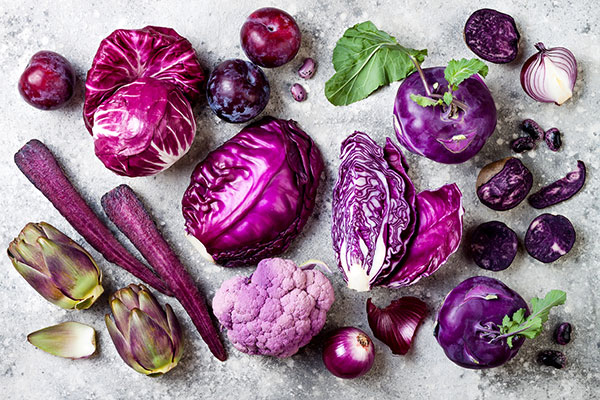You reach the peak of your lung power at about age 30. After that, your breathing becomes less efficient.
As your lungs age, they become more vulnerable to disease. In fact, age is the number one risk factor for COVID death. In the U.S., about 80% of coronavirus deaths have been in people 65 and older.i
But researchers have found that one group of food compounds staves off lung aging.
They’re called anthocyanins.
They’re beneficial plant pigments that give fruits and vegetables a deep red, purple, or blue color. So think berries or naturally purple-colored vegetables like red cabbage.
Anthocyanins are part of a larger group of beneficial plant molecules called flavonoids. Previous studies show they increase aerobic performance and maximize oxygen consumption.ii iii
One Type of Food Staves Off Lung Aging
Scientists at the Johns Hopkins Bloomberg School of Public Health looked at how a diet high in anthocyanins affects lung function.iv
The subjects included 436 adults from Norway and England. They completed dietary questionnaires and lung tests. Ten years later, their lung function was tested again.
Researchers found a direct relationship between anthocyanin consumption and lung health. The more deeply pigmented produce people ate, the better their lung health.
Dr. Vanessa Garcia-Larsen led the study. She’s an assistant professor of human nutrition at Johns Hopkins.
She explained that lung decline varies from person to person. It depends on factors such as smoking, physical activity, exposure to pollutants, and medical conditions.
But overall, people who eat large amounts of dark-colored fruits and vegetables have better lung health as they get older.
“Foods rich in anthocyanin flavonoids might protect the lungs through their antioxidant and anti-inflammatory properties,” Dr. Garcia-Larsen said.
Anthocyanin levels in lung tissue are higher just a few hours after eating foods such as berries, she said. This “suggests that [anthocyanin-foods] might have a functional role in protecting the lungs against pollutants and other environmental insults,” she said.
So which foods should you eat to keep your lungs strong?
5 Fruits and Vegetables High in Anthocyanins
- Blackberries
- Blueberries
- Currants
- Red Cabbage
- Black plums
Anthocyanins are also abundant in red grapes, raspberries, and pomegranates… really any fruits and vegetables with deep purple, red, or blue hues.
Increase your levels of the vital compound by blending a handful of dark berries into a fruit smoothie or yogurt. Add red cabbage to salads.
You can also get anthocyanins in supplement form. Look for blueberry, tart cherry and other dark berry extracts online and in health food stores.
One more thing…
You may be wondering why we haven’t mentioned beets. After all, they are among the most deeply colored vegetables.
It’s because the color of beets comes not from anthocyanins but from another group of plant chemicals called betalains.
Like anthocyanins, betalains may help your lungs. Researchers have found that beet juice can improve athletic performance and increase blood flow. But betalains have not been specifically studied to determine if they prevent lung aging in the same way anthocyanins do.v vi vii
With the pandemic continuing to rage, protecting your lungs is more important than ever. Eating red and purple plant foods is an effective, natural way to breathe easier.
Get the Latest Breaking News About Coronavirus Here
- Many Seniors Take Drugs That Could Reduce COVID Vaccine Response. Are you one of them? Click HERE to find out.
- The Alarming COVID Vaccine Side Effect Every Woman Should Know About. It’s sending some women running to their doctors into a panic. Click HERE to read more.
- Omega-3s Cut COVID Death Risk, Study Finds. Most people take fish oil for heart health. But new research shows it could offer an important added benefit during the pandemic. Click HERE to read more.

